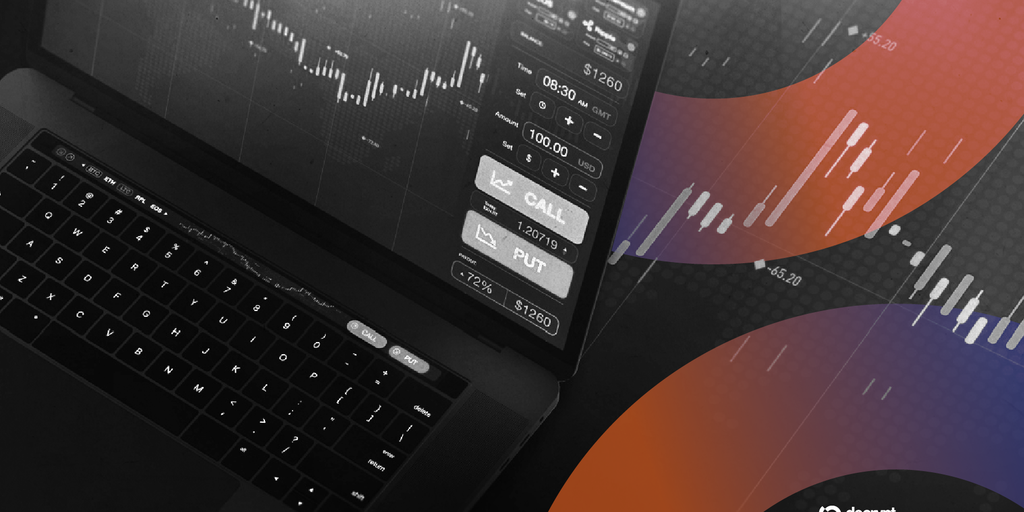📰 DMK AI Summary In the coming years, Millennials and Gen Z will inherit a massive $83 trillion, with a significant portion likely to be tokenized by 2030. This shift in wealth ownership is prompting the need for wealth managers to adopt tokenization to cater to a new generation seeking digital assets and innovative financial solutions. However, challenges like regulatory complexities, infrastructure gaps, and differing generational views pose obstacles to this transition. 💬 DMK Insight As the greatest wealth transfer in history unfolds, wealth managers must recognize the importance of embracing tokenization to cater to the preferences of the upcoming generation of investors. Addressing regulatory hurdles, enhancing infrastructure, and bridging the gap between generations will be crucial for wealth managers to navigate this evolving landscape successfully. 🧾 Editorial Note This article was automatically summarized and analyzed by DMK News Bot’s AI System, using publicly available data and verified financial updates.
'Only $250K?' Jack Dorsey Prods Tether Over Donation to Support Bitcoin Devs
Twitter co-founder Jack Dorsey previously gave $21 million to support OpenSats, which backs Bitcoin developers. Tether gave $250,000 to the nonprofit this week. 🔗 Read Full Article 💡 DMK Insight Jack Dorsey’s continued financial support for Bitcoin development through OpenSats signals a deepening commitment to the crypto ecosystem, one that could inspire other tech leaders to step up. Tether’s recent contribution, while modest in comparison, highlights a growing recognition among major players that fostering innovation is crucial for the longevity of cryptocurrencies. As these investments trickle in, they not only bolster developer resources but also reinforce the notion that Bitcoin is here to stay, despite its ups and downs. It’s a reminder that in the world of crypto, collaboration can often be more valuable than competition. 📮 Takeaway Watch for increased funding in crypto development as a sign of market confidence.
Circuit Breakers in DeFi? Why Experts Say Managing Chaos On-Chain Isn't That Easy
Crypto prices plummeted last week as liquidations fueled historic volatility. Experts say that Wall Street’s safety net wouldn’t have helped. 🔗 Read Full Article 💡 DMK Insight Last week’s crypto price plunge serves as a stark reminder that even the most seasoned traders can find themselves in a perfect storm of volatility. With liquidations hitting historic levels, it’s clear that the crypto market remains a wild beast, untamed by traditional financial safety nets. This chaos not only rattles investor confidence but also raises questions about the sustainability of current trading practices. As we navigate these turbulent waters, it’s crucial for investors to reassess their risk management strategies and stay alert to the unpredictable nature of this digital frontier. 📮 Takeaway Investors should tighten their risk management strategies in light of ongoing market volatility.
Wikipedia Traffic Drops as AI Answers Eat the Free Encyclopedia
The Wikimedia Foundation revealed an unsettling trend: search engines and chatbots are providing Wikipedia’s content directly to users without sending them to the site. 🔗 Read Full Article 💡 DMK Insight The Wikimedia Foundation’s revelation highlights a growing tension in the digital landscape: content creators are increasingly sidelined as tech giants leverage their work for profit. This trend not only threatens the financial sustainability of platforms like Wikipedia but also raises questions about the value of original content in an age of instant gratification. If users can access information without visiting the source, the implications for advertising revenue and community support could be dire. It’s a classic case of ‘you don’t know what you’ve got till it’s gone’—and in this case, it might just be the very essence of collaborative knowledge sharing. 📮 Takeaway Investors should monitor how this trend affects digital content monetization strategies moving forward.
Newsquawk Week Ahead: US, UK, Japan and Canada CPI, Flash Global PMIs, Japan PM Vote
Mon: PBoC LPR, CCP 4th Plenum (20th-23rd), Chinese House Prices (Sep), Retail Sales (Sep) & Industrial Output (Sep), German Producer Prices (Sep), US Leading Index (Sep), New Zealand Trade (Sep)Tue: NBH Policy Announcement, CCP 4th Plenum (20th-23rd), UK PSNB (Sep), Canadian CPI (Sep)Wed: CCP 4th Plenum (20th-23rd); UK CPI (Sep), Japanese Trade Balance (Sep)Thu: CBRT, BOK Policy Announcement, CCP 4th Plenum (20th-23rd), European Council (23rd-24th); US Weekly Claims, Existing Home Sales (Sep), EZ Consumer Confidence Flash (Oct), Canadian Retail Sales (Aug), Australian Flash PMIs (Oct)Fri: CBR Policy Announcement, European Council (23rd-24th), Japanese CPI (Sep), UK Retail Sales (Sep), EZ, UK & US Flash PMIs (Oct), US New Home Sales (Sep)PBoC LPR (Mon): The PBoC is to announce China’s benchmark Loan Prime Rates next week, which are likely to be maintained at their current levels, with the 1-year LPR at 3.00% which is the rate most new loans are based on and with the 5-year LPR at 3.50% which is the reference for mortgages. As a reminder, Chinese banks refrained from any adjustments to the LPRs for a fourth consecutive month in September, which was as expected, while PBoC Governor Pan commented shortly after the announcement that they will use various policy tools based on the economic situation and will be data-driven, and have “appropriately accommodative policy stance”. Furthermore, the central bank had previously noted that it is to step up monetary policy adjustment and keep liquidity ample, as well as enhance interest rate guidance and will promote a decline in social financing cost. Despite the language from the central bank, an imminent reduction in the LPRs is unlikely, as the central bank has shown a clear preference for making adjustments through its main policy tool of open market operations to target liquidity. Furthermore, the recent data from China was mixed as trade figures showed faster-than-expected growth in Exports and Imports for the world’s second-largest economy, which suggests a lack of urgency to immediately cut benchmark lending rates, although CPI data was softer-than-expected, and both consumer and factory gate prices remained in deflation.CCP 4th Plenum (Mon-Thu): The Chinese Communist Party’s Central Committee will hold its Fourth Plenum from October 20th to October 23rd, with the meeting expected to set the framework for the 15th Five-Year Plan (2026–2030). The session will offer the first indication of Beijing’s medium-term policy priorities, but will be closed with only a brief communiqué released at the end. Detailed policy targets are unlikely before March, when the National People’s Congress convene, although sources till then may offer hints. “Of particular interest are priorities for development, including how to expand consumption, foster innovation, and the strategic focuses going forward”, says ING. The plenum also coincides with rising US-Sino trade tensions after China tightened rare earth export controls, and the US threatened new tariffs of 100%, although Trump and Xi are still set to meet in South Korea.Chinese Activity Data (Mon): China will release Q3 GDP alongside September’s activity data. GDP Q/Q is forecast at 0.8% (prev. 1.1%), Y/Y 4.7% (prev. 5.2%). Retail Sales expected at 2.9% Y/Y (prev. 3.4%). Industrial Production 5.0% (prev. 5.2%). Fixed Asset Investments are expected at 0.2% Y/Y (prev. 0.5%). ING expects Q3 GDP to show a sharper slowdown to around 4.5% Y/Y, citing weaker consumption, sluggish investment, and ongoing property sector weakness, with September price data likely to confirm continued declines. The IMF this week maintained its 2025 China growth forecast at 4.8% (vs China’s target of “around 5%”), noting that fiscal support and resilient exports have offset tariff headwinds but warning that the property sector remains fragile and credit demand subdued. The data also comes at a time were US-Sino trade tensions are heightened, following China’s rare earths export controls and the subsequent threat of a 100% tariff from November 1st from the US.Japanese Parliament Vote for New PM (Mon): Japan’s LDP and CDP have agreed to hold a parliamentary vote on October 21st to select Japan’s next PM following the collapse of the 26-year-old ruling LDP-Komeito coalition last week. LDP leader Takaichi remains the frontrunner, with Bloomberg reporting that talks between the LDP and the Japan Innovation Party (Ishin) have advanced toward a potential coalition that would give the LDP an additional 35 seats, still shy of an outright majority but sufficient to secure Takaichi’s confirmation. Innovation Party co-leader Yoshimura said the chances of a deal were “50-50”, although co-leader Fujita later announced “big progress” with the LDP following talks, and suggested they will enter the stage of finalising details, but final discussions are very delicate.Canadian CPI (Tue): This is the last inflation report before the October BoC meeting, where markets price in 16bps of easing, implying a 64% probability of a 25bps rate cut – 25bps is not fully priced until December. The data will help shape rate cut expectations, with rate cut bets paring after the recent strong labour market report. The recent inflation report saw a -0.1% decline with the Y/Y at 1.9%, up from the 1.7% in July. Meanwhile, the core metrics (excluding food and energy) declined 0.2% M/M, with Y/Y to 2.4% Y/Y. The M/M declines will be welcome with Y/Y inflation still within the BoC’s target. The BoC preferred measures, average of the median, trim and common, remain towards the top-end of the BoC target at 2.86%. The BoC removed forward guidance when it cut rates by 25bps in September, but Governor Macklem said it will continue to assess the risks, look over a shorter horizon than usual, and be ready to respond to new information. The September rate cut was agreed due to the weaker economy, fewer upside risks to inflation, and a softening labour market. Recent growth data saw a 0.2% rise in July, while StatsCan signalled stagnation for August; OxEco suggested Canada may avoid another GDP contraction in Q3 after a 0.4% decline in Q2. Labour market data in September was strong, while the upcoming CPI data will give the BoC a fresh read on the inflation situation. Note, a recent
Roman Storm asks DeFi devs: Can you be sure DOJ won't charge you?
Current laws in the United States do not explicitly protect open source software developers and create the risk of retroactive prosecution. 🔗 Read Full Article 💡 DMK Insight The absence of explicit legal protections for open source software developers in the U.S. is a ticking time bomb for innovation. As developers push boundaries, they face the looming threat of retroactive prosecution, which could stifle creativity and collaboration in the tech community. This uncertainty not only affects individual developers but also raises concerns for investors who back projects reliant on open source contributions. In a landscape where software is the backbone of countless industries, the need for clear legal frameworks has never been more pressing. 📮 Takeaway Investors should monitor legal developments to safeguard their interests in open source projects.
Roman Storm asks DeFi devs: Can you be sure DOJ won't charge you?
Current laws in the United States do not explicitly protect open source software developers and create the risk of retroactive prosecution. 🔗 Read Full Article 💡 DMK Insight The absence of clear legal protections for open source software developers in the U.S. is a ticking time bomb for innovation. As developers push boundaries to create and share, they face the looming threat of retroactive prosecution, which could stifle creativity and collaboration in the tech community. This uncertainty not only affects individual developers but also raises concerns for investors who rely on a robust ecosystem for their tech investments. If the legal landscape doesn’t evolve, we might see a chilling effect on the very innovation that drives the industry forward. 📮 Takeaway Investors should monitor legal developments closely, as they could impact the viability of open source projects.
Japan’s FSA weighs allowing banks to hold Bitcoin, other cryptos: Report
Japan’s Financial Services Agency is weighing reforms that could let banks hold cryptocurrencies like Bitcoin and operate licensed crypto exchanges. 🔗 Read Full Article 💡 DMK Insight Japan’s Financial Services Agency is stepping into the crypto ring, and it could be a game-changer for both banks and investors. Allowing banks to hold cryptocurrencies like Bitcoin not only legitimizes digital assets but also signals a shift towards mainstream acceptance. This move could enhance liquidity and stability in the crypto market, making it more attractive for traditional investors. However, it also raises questions about regulatory oversight and the potential for increased volatility as banks navigate this new terrain. 📮 Takeaway Keep an eye on Japan’s regulatory changes; they could reshape the crypto landscape significantly.
Chinese tech giants halt Hong Kong stablecoin plans amid Beijing concerns: FT
Ant Group and JD.com have paused their stablecoin initiatives in Hong Kong after Beijing regulators raised concerns over private firms issuing digital currencies. 🔗 Read Full Article 💡 DMK Insight The pause by Ant Group and JD.com on their stablecoin projects is a clear signal that Beijing’s regulatory grip is tightening around the digital currency space. This move not only reflects the government’s apprehension about private entities wielding too much financial power but also underscores the broader struggle between innovation and regulation. For investors, this could mean a prolonged period of uncertainty in the crypto market, as companies reassess their strategies in light of these regulatory hurdles. It’s a classic case of ‘watch your step’ in the evolving landscape of digital finance. 📮 Takeaway Stay alert to regulatory developments, as they could reshape the crypto landscape overnight.
'Deploying More Capital — Steady Lads': Bitcoin Treasury Companies Struggle to Halt Plunge
Already losing favor with investors when bitcoin was in bull mode, companies built around stacking BTC are facing an even larger threat thanks to the price collapse over the past two weeks. 🔗 Read Full Article 💡 DMK Insight The recent downturn in Bitcoin’s price is not just a blip; it’s a wake-up call for companies that have built their business models around stacking BTC. As investor sentiment shifts, these firms may find themselves in a precarious position, struggling to justify their value propositions in a bearish market. This could lead to a consolidation phase where only the most resilient players survive, forcing others to rethink their strategies or risk becoming obsolete. In the world of crypto, adaptability is key, and those who cling too tightly to a sinking ship might just find themselves underwater. 📮 Takeaway Watch for signs of innovation from BTC stacking companies as they adapt to the changing market.

 Bitcoin
Bitcoin  Ethereum
Ethereum  Tether
Tether  XRP
XRP  USDC
USDC  Lido Staked Ether
Lido Staked Ether  TRON
TRON  Dogecoin
Dogecoin  Cardano
Cardano 






